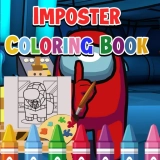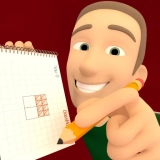Chess Online
Played 53 times.
- % (0/0)
It seems like you’re describing a chess game with a wide variety of customizable options! Here’s a detailed breakdown of the features you mentioned, turning them into a cohesive description of gameplay and available options:
---
### **Chess Game Features and Options:**
#### **1. Opponent Selection (Difficulty Levels):**
* **Choose Your Opponent:** Pick from **18 difficulty levels**, ranging from **Beginner** to **World Champion**. This allows players of all skill levels to challenge themselves and gradually improve their chess abilities.
* **Adaptive AI:** The game can adjust its strategy based on the difficulty level, so beginners won’t feel overwhelmed, while advanced players can push their limits.
#### **2. Time Control Modes:**
* **Unlimited:** No time limits for making moves, allowing for a more relaxed and thoughtful game.
* **Bullet:** **1-minute per player**; fast-paced, intense chess games where every move counts and there’s no time for hesitation.
* **Blitz:** Typically **3-5 minutes per player**; a fast and thrilling game with a ticking clock pushing both players to think quickly.
* **Rapid:** Usually **10-15 minutes per player**; offering a middle ground between thoughtful play and fast decision-making.
* **Classic:** Traditional **long games**, where players can take as much time as they need to plan their moves, often lasting **30 minutes** or more per player.
#### **3. Piece Movement Assistance:**
* **Highlighting Possible Moves:** When you select a piece, the game **highlights** all the valid moves that piece can make. This feature helps players, especially beginners, see where their piece can go and helps them learn chess strategies.
* **Interactive Hints:** During the game, you can access **hints** that suggest the best move to make, providing **strategic guidance**. This is perfect for learning and improving your play.
#### **4. Move Undo and Correction:**
* **Undo Moves (Yawning):** If you accidentally make a move or change your mind, you can **cancel the move**. This allows you to fix mistakes or explore different strategies without the pressure of committing to a bad move.
* **Backtrack Feature:** If you made a mistake and want to go back to a previous position, there’s an option to **replay the game from a certain point**, allowing you to retrace your steps and rethink your strategy.
#### **5. Post-Game Analysis:**
* **Game Analysis:** After the game ends, the system provides an **analysis** of your moves. It highlights **mistakes**, shows the **best moves** you could have made, and provides recommendations on how to play better next time.
* **Learning from Mistakes:** The analysis helps you improve your chess skills by identifying **areas for improvement**, allowing you to grow as a player and avoid repeating the same errors in future games.
#### **6. Handicap Settings:**
* **Setting the Handicap:** If you want to challenge yourself against stronger opponents or give yourself an advantage when playing against someone more skilled, the game lets you **set a handicap**. This could involve starting with extra material or giving the opponent a slight disadvantage.
---
### **Gameplay Overview:**
1. **Choose Your Opponent:**
* Select from a range of difficulty levels, from beginner to world champion. The difficulty setting changes how aggressive or defensive the AI will play.
2. **Pick Time Control:**
* Decide on the pace of your game by selecting a time control mode. Want a quick match? Choose **Blitz** or **Bullet**. Prefer to take your time and think through your moves? Go for **Classic** or **Unlimited**.
3. **Piece Movement Assistance:**
* As you move your pieces around the board, the game will **highlight** all the valid squares for that piece, helping you understand its capabilities and plan your next move better.
4. **Interactive Hints and Analysis:**
* **Hints** during the game help guide you towards the best moves. After the game ends, an **analysis** will break down your performance, showing what went well and where you made mistakes. This is ideal for players who want to improve their skills.
5. **Undo and Backtrack:**
* If you ever make an accidental or regrettable move, simply use the **undo** feature. Additionally, you can **replay** the game from any point to analyze different strategies or fix errors.
6. **Set a Handicap:**
* If you want to challenge yourself or balance the game, set a **handicap** to adjust the starting conditions, giving you or your opponent a slight advantage.
---
### **Summary:**
This chess game provides **customizability** for players of all skill levels. You can select from multiple difficulty levels, adjust time settings, and receive help with **highlighted moves** and **hints**. The ability to **undo moves** and **analyze** your gameplay after each match ensures a **learning experience** for all players, from beginners to experts. Additionally, the option to **set a handicap** offers a great way to customize the difficulty and create more dynamic and competitive matches.
---
Let me know if you'd like any other specific features or details!
---
### **Chess Game Features and Options:**
#### **1. Opponent Selection (Difficulty Levels):**
* **Choose Your Opponent:** Pick from **18 difficulty levels**, ranging from **Beginner** to **World Champion**. This allows players of all skill levels to challenge themselves and gradually improve their chess abilities.
* **Adaptive AI:** The game can adjust its strategy based on the difficulty level, so beginners won’t feel overwhelmed, while advanced players can push their limits.
#### **2. Time Control Modes:**
* **Unlimited:** No time limits for making moves, allowing for a more relaxed and thoughtful game.
* **Bullet:** **1-minute per player**; fast-paced, intense chess games where every move counts and there’s no time for hesitation.
* **Blitz:** Typically **3-5 minutes per player**; a fast and thrilling game with a ticking clock pushing both players to think quickly.
* **Rapid:** Usually **10-15 minutes per player**; offering a middle ground between thoughtful play and fast decision-making.
* **Classic:** Traditional **long games**, where players can take as much time as they need to plan their moves, often lasting **30 minutes** or more per player.
#### **3. Piece Movement Assistance:**
* **Highlighting Possible Moves:** When you select a piece, the game **highlights** all the valid moves that piece can make. This feature helps players, especially beginners, see where their piece can go and helps them learn chess strategies.
* **Interactive Hints:** During the game, you can access **hints** that suggest the best move to make, providing **strategic guidance**. This is perfect for learning and improving your play.
#### **4. Move Undo and Correction:**
* **Undo Moves (Yawning):** If you accidentally make a move or change your mind, you can **cancel the move**. This allows you to fix mistakes or explore different strategies without the pressure of committing to a bad move.
* **Backtrack Feature:** If you made a mistake and want to go back to a previous position, there’s an option to **replay the game from a certain point**, allowing you to retrace your steps and rethink your strategy.
#### **5. Post-Game Analysis:**
* **Game Analysis:** After the game ends, the system provides an **analysis** of your moves. It highlights **mistakes**, shows the **best moves** you could have made, and provides recommendations on how to play better next time.
* **Learning from Mistakes:** The analysis helps you improve your chess skills by identifying **areas for improvement**, allowing you to grow as a player and avoid repeating the same errors in future games.
#### **6. Handicap Settings:**
* **Setting the Handicap:** If you want to challenge yourself against stronger opponents or give yourself an advantage when playing against someone more skilled, the game lets you **set a handicap**. This could involve starting with extra material or giving the opponent a slight disadvantage.
---
### **Gameplay Overview:**
1. **Choose Your Opponent:**
* Select from a range of difficulty levels, from beginner to world champion. The difficulty setting changes how aggressive or defensive the AI will play.
2. **Pick Time Control:**
* Decide on the pace of your game by selecting a time control mode. Want a quick match? Choose **Blitz** or **Bullet**. Prefer to take your time and think through your moves? Go for **Classic** or **Unlimited**.
3. **Piece Movement Assistance:**
* As you move your pieces around the board, the game will **highlight** all the valid squares for that piece, helping you understand its capabilities and plan your next move better.
4. **Interactive Hints and Analysis:**
* **Hints** during the game help guide you towards the best moves. After the game ends, an **analysis** will break down your performance, showing what went well and where you made mistakes. This is ideal for players who want to improve their skills.
5. **Undo and Backtrack:**
* If you ever make an accidental or regrettable move, simply use the **undo** feature. Additionally, you can **replay** the game from any point to analyze different strategies or fix errors.
6. **Set a Handicap:**
* If you want to challenge yourself or balance the game, set a **handicap** to adjust the starting conditions, giving you or your opponent a slight advantage.
---
### **Summary:**
This chess game provides **customizability** for players of all skill levels. You can select from multiple difficulty levels, adjust time settings, and receive help with **highlighted moves** and **hints**. The ability to **undo moves** and **analyze** your gameplay after each match ensures a **learning experience** for all players, from beginners to experts. Additionally, the option to **set a handicap** offers a great way to customize the difficulty and create more dynamic and competitive matches.
---
Let me know if you'd like any other specific features or details!
Instructions:
Here’s a breakdown of the rules for **draw situations** in chess, based on the conditions you've mentioned:
---
### **Draw Conditions in Chess:**
1. **Stalemate:**
* **Definition:** A **stalemate** occurs when a player has no legal moves left, but their king is not in **check**. This means the player’s king is safe, but they are unable to move any piece without breaking the rules.
* **Result:** When a stalemate happens, the game is declared a **draw**, and no player wins. This often occurs when the opponent is unable to make a move but still has pieces left on the board.
2. **Three-Fold Repetition:**
* **Definition:** A **three-fold repetition** happens when the same position occurs on the board **three times**, with the same player to move each time, and the moves made during each repetition are identical.
* **Result:** Either player can claim a **draw** if the same position has appeared three times, regardless of who caused the repetitions. The player may request a draw before making the third repetition or after.
3. **Fifty-Move Rule (No Capture or Pawn Move):**
* **Definition:** If **50 consecutive moves** are made by both players without any **pawn movement** or **captures**, either player can claim a draw.
* **Result:** This rule prevents games from dragging on endlessly without significant progress, such as if both players are just maneuvering without trying to checkmate.
4. **Insufficient Material:**
* **Definition:** A game ends in a draw if one player does not have enough pieces or material to force a checkmate, regardless of the opponent’s moves.
* **Example Situations:**
* King vs. King (only one king remains).
* King and a knight vs. King.
* King and a bishop vs. King.
* **Result:** If a player is left with **insufficient material** to checkmate their opponent, the game is automatically declared a **draw**. For instance, if one player only has a king and the opponent only has a king, no checkmate can occur, so the game is a draw.
---
### **Additional Notes on Draws:**
* **Claiming a Draw:**
* A draw can be **claimed** by the player who wishes to invoke one of these conditions. For example, if a player notices the three-fold repetition, they must request the draw before making the third repetition. Similarly, a draw can be claimed after 50 moves without captures or pawn movement.
* **Draw by Agreement:**
* Players may also agree to a draw at any point during the game. This is a mutual agreement and is commonly seen when both players believe that neither can win or make progress.
* **Draw in Tournament Play:**
* Some tournaments may have specific rules about when draws are automatically agreed upon, or how they are recorded. Players should be aware of these rules to avoid confusion during competitive play.
---
### **Summary of Draw Conditions:**
* **Stalemate**: No legal moves, but king is not in check.
* **Three-Fold Repetition**: The same position occurs three times with the same player to move.
* **50-Move Rule**: No captures or pawn moves for 50 moves by both players.
* **Insufficient Material**: One player has too few pieces to checkmate.
These draw conditions help ensure that a game of chess doesn’t drag on indefinitely without resolution and that the game is as fair and competitive as possible.
Let me know if you have more questions or if you'd like to explore any other chess rules!
---
### **Draw Conditions in Chess:**
1. **Stalemate:**
* **Definition:** A **stalemate** occurs when a player has no legal moves left, but their king is not in **check**. This means the player’s king is safe, but they are unable to move any piece without breaking the rules.
* **Result:** When a stalemate happens, the game is declared a **draw**, and no player wins. This often occurs when the opponent is unable to make a move but still has pieces left on the board.
2. **Three-Fold Repetition:**
* **Definition:** A **three-fold repetition** happens when the same position occurs on the board **three times**, with the same player to move each time, and the moves made during each repetition are identical.
* **Result:** Either player can claim a **draw** if the same position has appeared three times, regardless of who caused the repetitions. The player may request a draw before making the third repetition or after.
3. **Fifty-Move Rule (No Capture or Pawn Move):**
* **Definition:** If **50 consecutive moves** are made by both players without any **pawn movement** or **captures**, either player can claim a draw.
* **Result:** This rule prevents games from dragging on endlessly without significant progress, such as if both players are just maneuvering without trying to checkmate.
4. **Insufficient Material:**
* **Definition:** A game ends in a draw if one player does not have enough pieces or material to force a checkmate, regardless of the opponent’s moves.
* **Example Situations:**
* King vs. King (only one king remains).
* King and a knight vs. King.
* King and a bishop vs. King.
* **Result:** If a player is left with **insufficient material** to checkmate their opponent, the game is automatically declared a **draw**. For instance, if one player only has a king and the opponent only has a king, no checkmate can occur, so the game is a draw.
---
### **Additional Notes on Draws:**
* **Claiming a Draw:**
* A draw can be **claimed** by the player who wishes to invoke one of these conditions. For example, if a player notices the three-fold repetition, they must request the draw before making the third repetition. Similarly, a draw can be claimed after 50 moves without captures or pawn movement.
* **Draw by Agreement:**
* Players may also agree to a draw at any point during the game. This is a mutual agreement and is commonly seen when both players believe that neither can win or make progress.
* **Draw in Tournament Play:**
* Some tournaments may have specific rules about when draws are automatically agreed upon, or how they are recorded. Players should be aware of these rules to avoid confusion during competitive play.
---
### **Summary of Draw Conditions:**
* **Stalemate**: No legal moves, but king is not in check.
* **Three-Fold Repetition**: The same position occurs three times with the same player to move.
* **50-Move Rule**: No captures or pawn moves for 50 moves by both players.
* **Insufficient Material**: One player has too few pieces to checkmate.
These draw conditions help ensure that a game of chess doesn’t drag on indefinitely without resolution and that the game is as fair and competitive as possible.
Let me know if you have more questions or if you'd like to explore any other chess rules!
Categories:
















